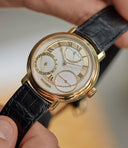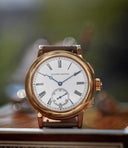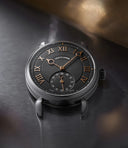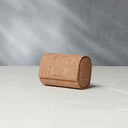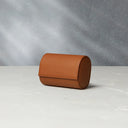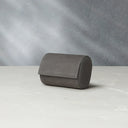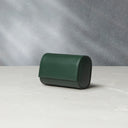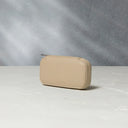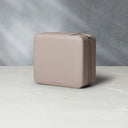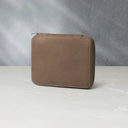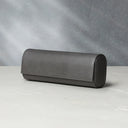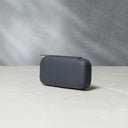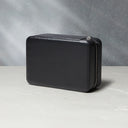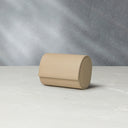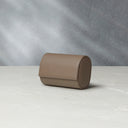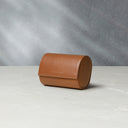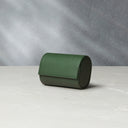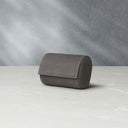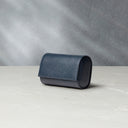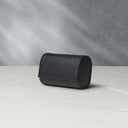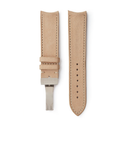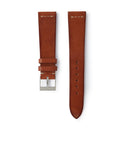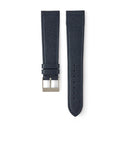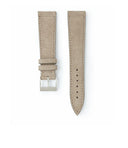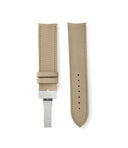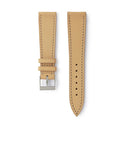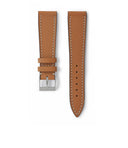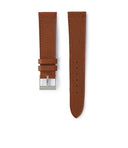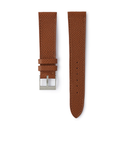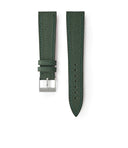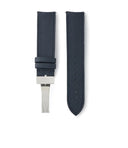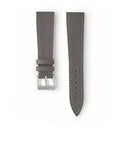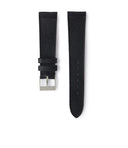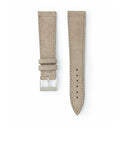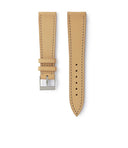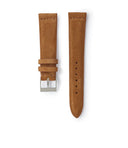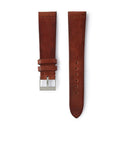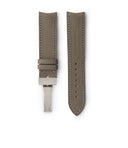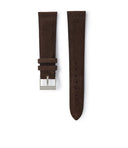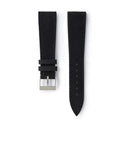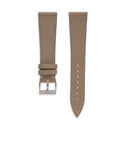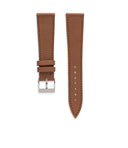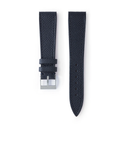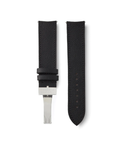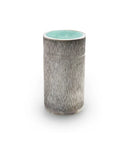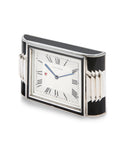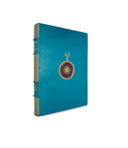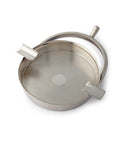

Becoming Rexhep Rexhepi
Raj Aditya Chaudhuri
If the period between 2013 and 2017 and the AK-06 represented two distinct phases in Rexhep Rexhepi’s story so far, the watchmaker decisively shifted gears again in 2018. His first taste of wider success with the AK-06 gave the watchmaker the confidence to step out of the shadows and the poise to consider the nature of his watchmaking.
The world around Rexhepi was shifting fast too, bringing ever more enthusiasts to watchmaking and more seasoned collectors to independent makers. The moment was ripe to be brave and Rexhepi seized on it. As the saying goes, fate rewarded his bravery.
In this final instalment of our guide to his watchmaking, we consider the pieces he has created under his own name and the future of the AKRIVIA mark.
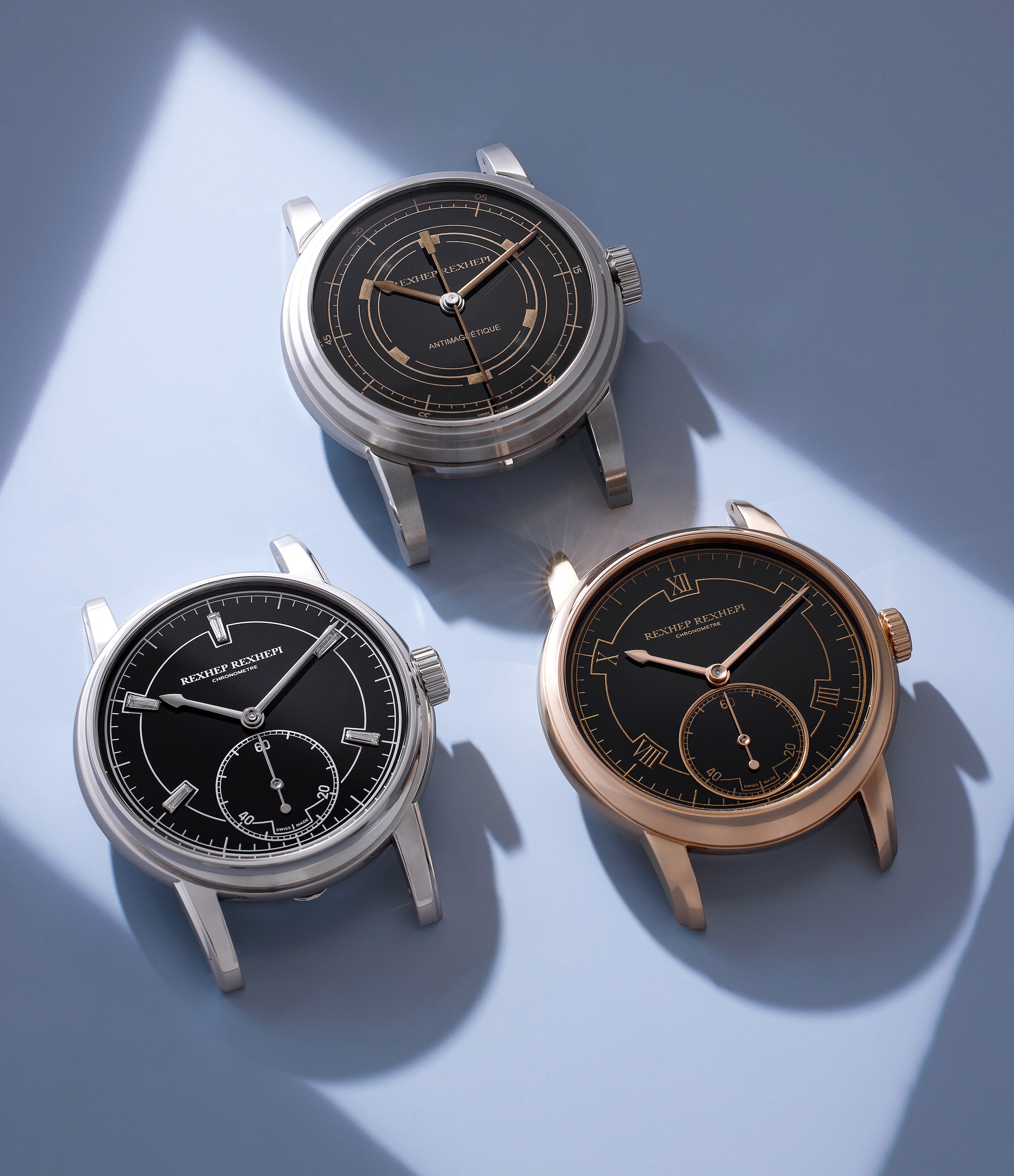

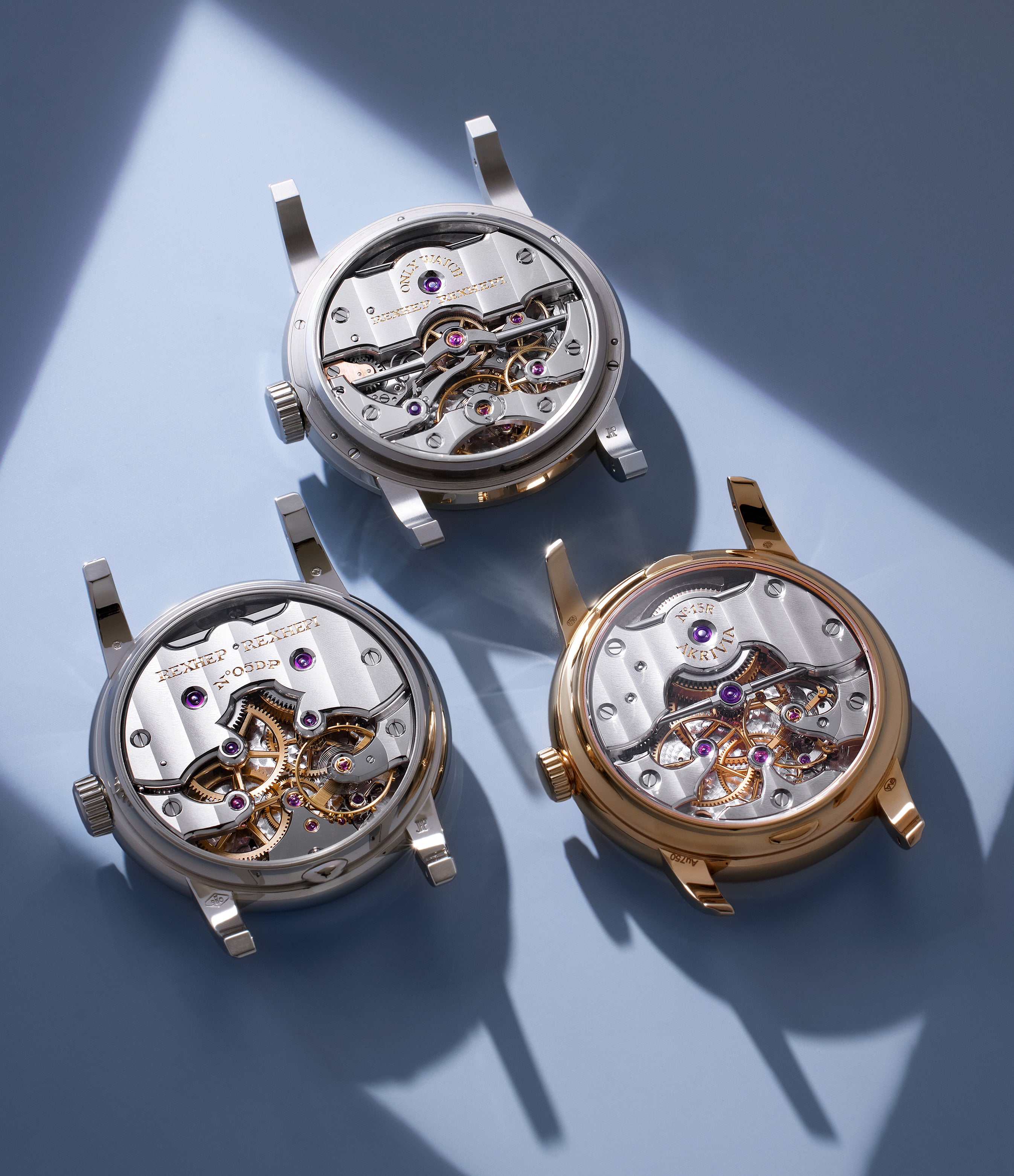

Chronomètre Contemporain 1
With the AK-06, Rexhepi had finally found the success that had eluded him before. However, none of the watches he had created up until then, barring his school watch from 2005, had borne the maker’s name on the dial.
Rexhepi says, “I couldn’t put my name on my watch. I thought people would say, ‘An Albanian has come and put his name on a Swiss watch.’ I lacked the confidence to do this.” But, with the success of the AK-06 Rexhepi finally felt it was time to act on what many friends and business associates had been telling him he should do. “Friends such as Mike [Tay Wee Jin of The Hour Glass, a Singapore-based retailer] were telling me, ‘You should put your name on the watches going forward. You're an artist, trust yourself.’ That finally gave me the confidence I needed,” he adds.


Year: 2018
Case Dimensions: 38mm x 9.5mm
Calibre: RRCC01
Power Reserve: 100 Hours
Complication: Zero-second Reset
Dial: White or black grand feu enamel
Calibre Finishing: Brass movement with yellow-gold gilt or rhodium finishing with Côtes de Genève, anglage, polibercé polishing, black polishing and perlage
Production numbers: 25 in platinum, 25 in rose gold.
The case
Just a year after the AK-06, which in itself marked a significant shift in the watchmaker’s vision, Rexhepi embarked on yet another, more wholesale reimagining of his watchmaking. The Chronomètre Contemporain I would of course be consequential for its classical bent and the name on the dial. Less discussed perhaps is the fact that this was the culmination of a long- held ambition of having his watches certified as chronometres by the Besançon Astronomical Observatory.
While it was originally released to cautious optimism, the popularity of the Chronomètre Contemporain I exploded later in 2018 when the watch won Rexhepi his first consequential award, the Men’s Watch prize at the Fondation du Grand Prix d’Horlogerie de Genève. The watch, in our view, is greater than the sum of its parts – chiefly because, together with the AK-06, it proved to be a definitive turning point in Rexhepi’s career.


The ovoid shape of the bezel is a visual cue reminiscent of AKRIVIA cases.
It is perhaps right to begin talking about the Chronomètre Contemporain with its case. Conservatively sized – 38mm across and just 9.5mm thick – it featured a vastly simplified architecture compared with the 30-part AKRIVIA cases of the past. The design, which issued from Rexhepi’s sketch pad, was inspired by Patek Philippe cases from the 1950s by Emile Vichet. Its simple, three-part construction, equally mirror-polished, belied the complexity required to retain a key AKRIVIA design detail.
The Chronomètre Contemporain takes me back to my roots, to my education. I tried to design it according to the classic codes I had learnt while at Patek Philippe.
– Rexhep Rexhepi
The ovoid bezel was given a concave form. However, to accommodate it without disrupting the classical profile, the midcase had to have an irregular shape – it dipped to meet the wider sections of the bezel, while rising in the flanks. It was a detail that would prove tricky to fabricate. The long, claw-like lugs were another aspect where Vichet’s design influence on Rexhepi appeared. Not only did they feature a gentle, stepped, almost Art Deco detail, their length meant that when the case was set down, only the tips of the lugs touched the surface, with the caseback hovering. At this time, the cases were still being fabricated by an external supplier.
Rexhepi says, “It was perhaps a sign of maturity where I started to re-evaluate my watchmaking aesthetic. You say to yourself, ‘Actually, is this me?’ I’ve always wanted to do things differently, but [the] Chronomètre Contemporain takes me back to my roots, to my education. I tried to design it according to the classic codes I had learnt while at Patek Philippe.”
The dial
The historical inspiration finds its way on to the vitreous (or grand feu) enamel dials too, in white or black. Often the choice of material on well-made pocket watches of the past, this kind of enamelling is achieved by applying layers of enamel powder with a paintbrush, firing the dial with high temperatures and repeating the process till a glossy texture is achieved. Finally, treating the dial with an abrasive paste produces the evenly smooth, glass-like texture. It is a challenging process, and one prone to failure. The dials were produced by the Geneva-based enameller Emaill’Art, known for creating dials for everyone from the best-established brands to fledgling independents.
For the Chronomètre Contemporain, this process is doubly difficult, given the two-part construction of the dial and subdial. While in the prototypes, the watch featured a simple, single-piece construction, production versions came with a recessed subdial, created separately and then soldered on. Around the subdial was a gold retaining ring corresponding to the case metal, adding an element for light to play with.


The elegant, rounded form of the hands was achieved by the same polibercé finishing technique applied to the centre wheel bridge on the movement side.


The blue printing against a grand feu enamel base added a hint of freshness to a classical aesthetic.
The enamel printing too invokes the Art Deco spirit Rexhepi was aiming for. The sector-style printed ring, recessed to accommodate the hour markers at 10 and 2 o’clock, protruded into the centre of the dial for the 12-, 4- and 8-hour markers. While not referencing any particular dial from the past, it brought to mind sector-style layouts of elegant but purpose-designed watches from the mid-century. The printing was blue on the white dial. However, the rose-gold printing on the black dial revealed a rich, granular quality on closer inspection that was especially attractive.
Paired with the dial was a new style of hands, that iterated on the spade tipped variety of AKRIVIA watches. While all hands were crafted from gold of the shade corresponding to the case, the hours and minutes hands were more rounded, with an attractive polibercé finishing. The minutes hand has a simple, pointer tip, while the hour hand’s spade end was distinctly more rounded.
The calibre
While the calibre was essentially the same manually wound example seen in the AK-06, it did without the complexity of the power reserve indicator. Rexhepi’s eye for detail also compelled him to redesign the bridges to better suit the classical nature of the watch. The barrel bridge had a wave-like form, while the three bridges on the southern half of the calibre – anchoring the balance, the third and fourth wheel – were spaced out a little further. This was done to expose more of the staggered baseplate, formed to frame the placement of the wheels. All levels of the baseplate were covered in perlage. As with the AK-06, the form of the bridges anchoring the third wheel and the balance, reflected each other’s form. The fourth wheel bridge was monobloc in its form, also a change from the AK-06. While less visible on the movement side, the calibre also featured the zero-second reset mini complication of the AK-06.


The bridges and baseplate, made from German silver, were rhodium-coated. The Côtes de Genève, a point of pride for Rexhepi, was noticeably improved, the pattern of the waves at once more defined and ethereal. The tip of the balance bridge, once again, was black-polished. As with the AK-06, the wheels of the going train and the balance were finely finished with beautiful, polished inward angles.
A notable quality was that all examples of the Chronomètre Contemporain I came with a chronometre certification from the Besançon Observatory. The certification is famously stringent, with the observatory only considering fully cased watches, and not just movements, for chronometric tests done over a 16-day period. “I was looking to do a simple watch – hour, minutes and seconds – like Philippe Dufour does,” says Rexhepi. “But this time, in addition to the new aesthetic, I wanted the movement to be certified chronometre. For me, this was something that had to be done. At the time, nobody really did this, barring Laurent Ferrier.” Later on in the series, Rexhepi offered such certification as an option available for a marginal premium.
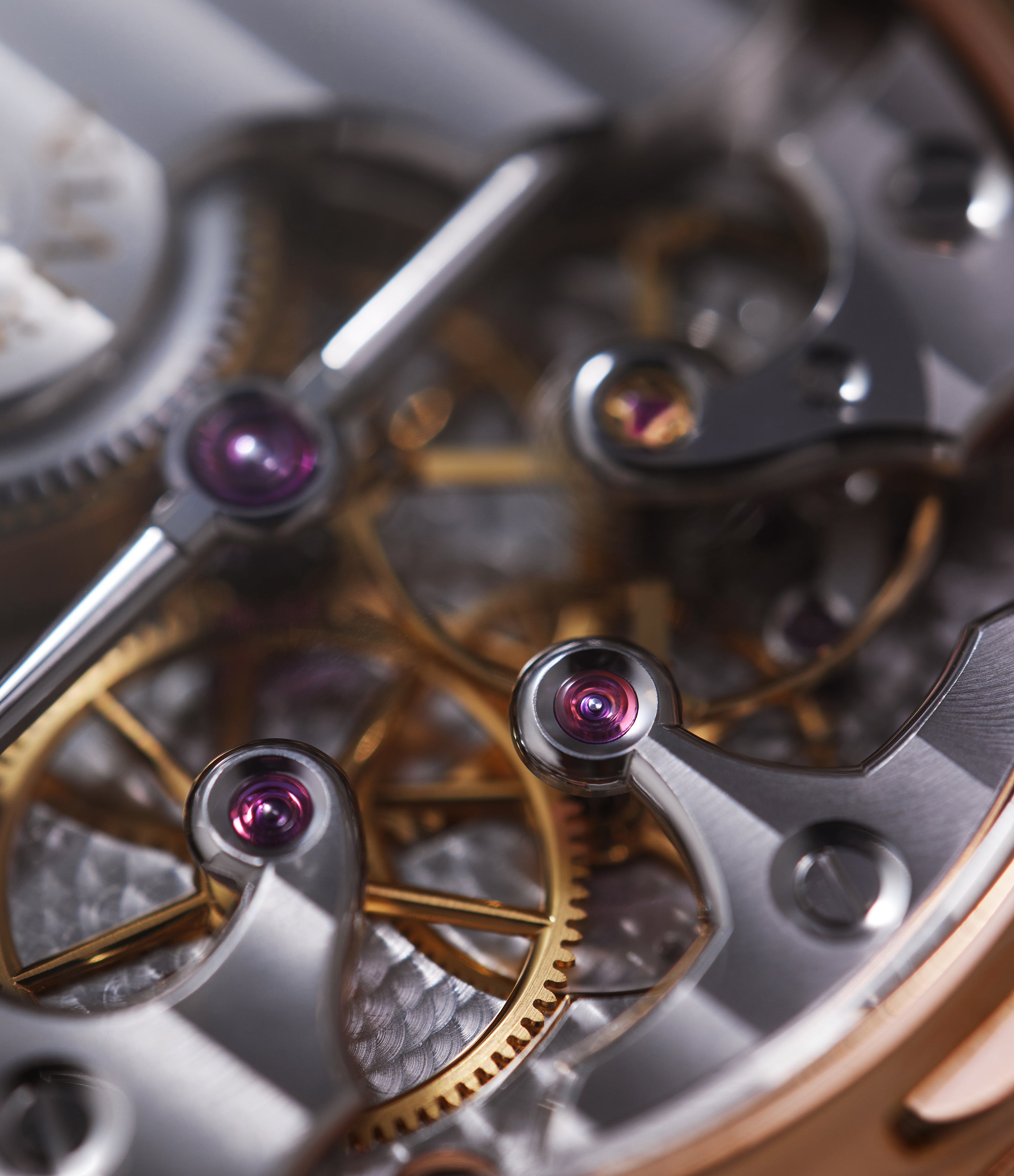

In context
The watch seemed to meet the exact expectations of the zeitgeist, proving to be immediately popular with the wider enthusiasts beyond those inclined towards independent watchmaking.
While it represented a departure from his original aesthetic, we view the Chronomètre Contemporain I as perhaps the first instance of Rexhepi marrying his formal training with his growing entrepreneurial acumen. He furthered the recognition from winning the GPHG Men’s Watch prize by using the Chronomètre Contemporain I as his first Only Watch entrant in 2019. The watchmaker has often talked about the advice he received at this crucial point in his career. However, while in the past this had resulted in watches such as the AK-05 Barrette Miroir – a watch he viewed as alien to his vision – the Chronomètre Contemporain I was firmly rooted in his past.
The watch, which would remain in production till 2024, boosted his sense of self as a watchmaker, and would become the prevailing aesthetic of his watchmaking even until the publishing of this guide. It accelerated his operation, and he used the opportunity to professionalise AKRIVIA to cement these gains. These savvy moves would pay dividends over the years to come.
Chronomètre Contemporain II
Rexhepi expanded the Chronomètre Contemporain II's offering when he introduced the Diamant and Rubis editions. The former will be paired with platinum cases while the latter will go with rose gold cases. Ten examples of each are planned.


Year: 2022
Case Dimensions: 38mm x 8.75mm
Calibre: RRCC02
Power Reserve: 82 Hours
Complication: Zero-second Reset and Deadbeat Seconds
Production numbers: 50 in platinum, 50 in rose gold.
Case metals: Rose gold and Platinum
Calibre finishing: German silver movement with yellow-gold gilt or rhodium finishing with Côtes de Genève, anglage, polibercé polishing, black polishing and perlage
The case
One of the most significant investments Rexhepi made in his operation was to bring in Jean-Pierre Hagmann, the famed casemaker. The now 83-year-old master, who came out of retirement to work on the Chronomètre Contemporain Only Watch for 2019, was tempted enough to merge his workshop in Geneva’s Old Town with Rexhepi’s operation a few streets away, lending the coveted JHP signature to every subsequent watch case. This small operation was well on course to becoming a real manufacture. The Chronomètre Contemporain was the first watch to come out of this new set-up.
Just as with the original Chronomètre Contemporain, it is only fitting we begin again by discussing the Chronomètre Contemporain II’s case, albeit for different reasons. While architecturally analogous to the original, it was made at AKRIVIA’s atelier and was subtly refined. The lugs were longer and had a more pronounced curve to them. Their flowing stepped detail was also done away with. Instead, the step now had a sharper, more defined aspect. On the back, they wore the coveted JHP signature. The ovoid bezel was also narrowed so the case was slimmer overall – down from 9.5mm on the Chronomètre Contemporain I to 8.75mm on the Chronomètre Contemporain II, albeit without the sliver of heft the crystal added to the latter.


Hagmann says, “I created something very simple but difficult to craft. Rexhep did not want any CNC and wanted to make it in the traditional way, so I developed a few different cases with conventional tools.”
However, he wasn’t entirely satisfied with the results. “One morning I woke up and I had this idea [based on] an old tool,” he says. “I told Loïc [Dello Buono, casemaker at AKRIVIA] to try using the tool. He was a bit confused, but I told him to try and see. Now we use this tool to make oval bezels for all our Chronomètre Contemporain II cases.” The cases continue to be offered in platinum and rose gold.
The calibre
For the new watch, Rexhepi was intent on incorporating yet another feature aimed at precision time telling – a deadbeat seconds function. While a solution could have been to design and mount a module on top of the existing calibre to achieve this, we think this would have been incongruous both to the case profile and Rexhepi’s style of watchmaking. The only solution, then, was to design an entirely new movement with an independent energy source for the deadbeat seconds. The set-up consisted of a second barrel and separate going train. This had the additional benefit of giving the movement at the back a certain visual symmetry, with two barrels and gear trains balanced on either side of the calibre. However, this meant the mainspring that provided energy to the balance had a smaller diameter, resulting in a marginally reduced 82 hours of reserve.


The edges of the bridges were pronounced and finished with mirror-polished anglage achieved by hand. This level of detail was also afforded to the countersinks of the working jewels and screws.
The zero-second function remained, of course. The calibre also benefits from a new mainspring and an updated, larger balance wheel with regulating screws instead of circular weights like on the previous calibre. Instead of the 10.5mm examples found in previous AKRIVIA watches as well as the original Chronomètre Contemporain, the new watch had a 11.5mm balance wheel.
The redesigned main bridge now anchored both mainspring barrels as well as two wheels of the going train, while the two floating bridges were moved further away from the central, crown-shaped fourth-wheel bridge. This bridge’s symmetry was slightly interrupted because it also acted as the escape bridge. It was made visually distinct by its immaculate black polishing, a treatment also given to the cap of the balance bridge. We have talked in the past about Rexhepi’s continuous evolution of his Côtes de Genève and in this watch it took on a fine, almost fingerprint-like quality. This was contrasted by the wider anglage on the edges of the bridges, polished to an incredible lustre. Aspects such as the inward angles of the wheels and the countersinks were given equal attention. The result was a feast of fine finishing.
The dial
Here subtle but significant changes altered the overall character of the watches. The basic formula was retained – a gold disc topped with grand feu enamel in white and black pigment printing. However, now the white dial was paired with the rose-gold case, while the black dial went with the platinum case. The white dial had darker, almost black enamel printing and the hands, treated to polibercé polishing, were heated to a brilliant purple. The black dial wore a similarly high-contrast layout with the printing in white on the black vitreous surface. Notably, the subsidiary register wore a trellised pattern engraved onto the enamel surface by hand using a technique called grave gratté. Subsequently, another thin coat of enamel paint of a greyish shade was applied and fired, sealing in the pattern. It was a pleasing detail that begged closer scrutiny.


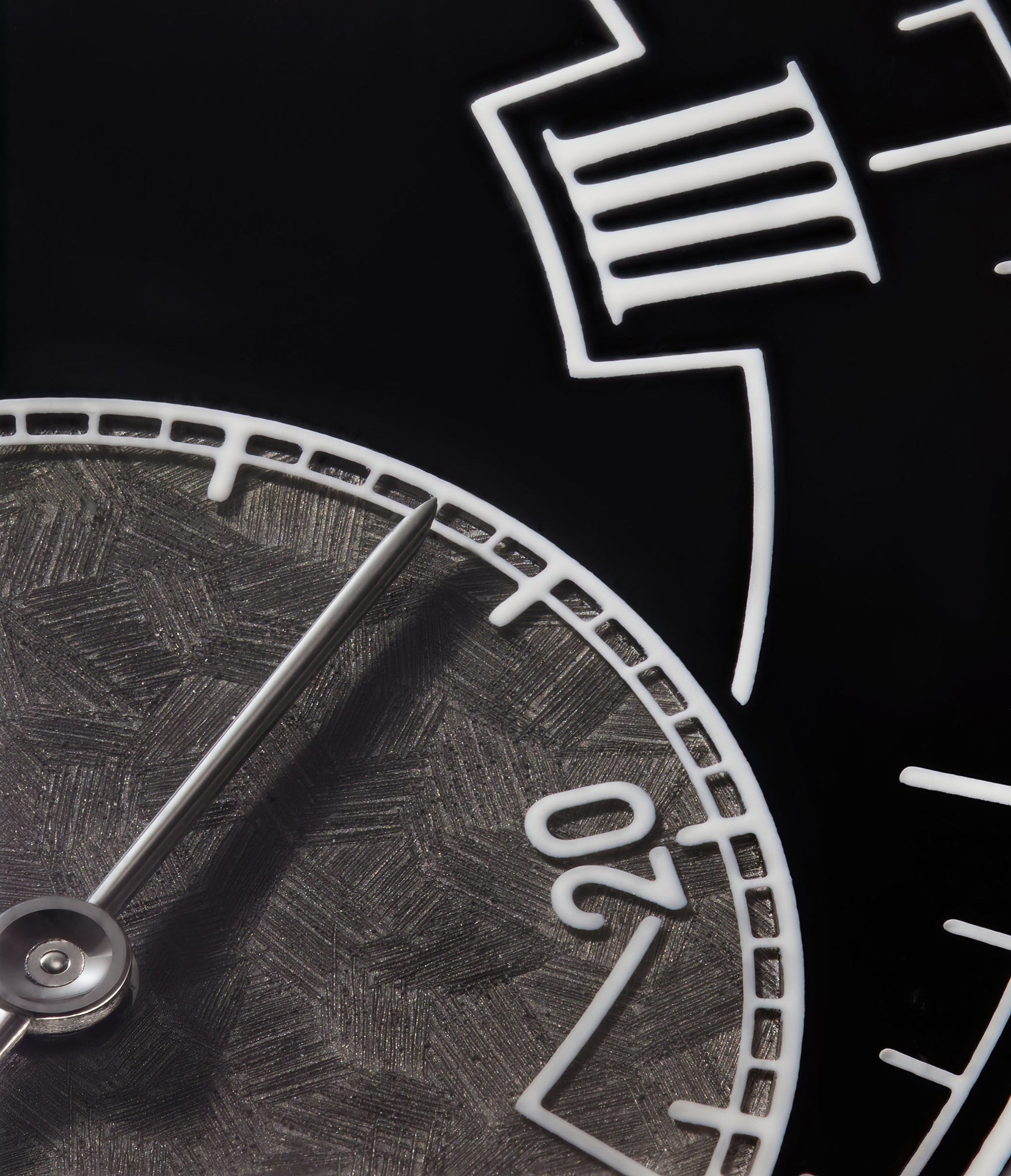

The glass-like texture of the enamel dial is achieved by the precise application of heat to colour pigment. The markings are then stamped on to the dial. The dial printing is done by hand.
In 2023, Rexhepi introduced the Chronomètre Contemporain II Diamant without much fanfare at all. While originally offered to select clients, the plan now is to make 10 examples in the black-dial/platinum-case configuration where the enamel-printed numerals were replaced by diamond batons. It is very much in the vein of the gentleman’s mid-century dress watches and fits remarkably well with the Chronomètre Contemporain II aesthetic. Perhaps owing to the popularity of the Diamant, in 2024, coinciding with the year’s Watches & Wonders fair, Rexhepi teased the Chronomètre Contemporain II Rubis – the rose-gold case and white dial with attractive, pomegranate-shaded ruby batons. It further enriches the eye-catching combination of dial and case metal, perhaps even more than the Diamant. It is then logical to assume that Rexhepi might add other stones, such as emeralds, to the dial further into the line’s offering.
In context
Right at the onset, Chronomètre Contemporain II earned Rexhepi his second GPHG award, when he won the Men’s Watch Prize again in 2022. It was further confirmation of the path he had embarked on and may have been instrumental in his decision to wind down the classic AKRIVIA aesthetic for good.
By building on the success of the Chronomètre Contemporain, Rexhepi provided further evidence of his philosophy. After all, the calibre in the original could perhaps have been adapted for the later iteration. Instead, he created something entirely new – and not just superficially so. His addition of a deadbeat-seconds function to the now familiar zero-second reset showed a commitment to meaningful chronometric benefit. This was despite the fact that Rexhepi’s desire to have the Chronomètre Contemporain I certified by the Besançon Observatory had been impacted by the pandemic, leading to him abandoning the exercise for the subsequent watch.
In 2022, Rexhepi's atelier was growing at a rapid pace. His restless desire for novelty would only be matched by his unshakeable belief that to continue to maintain the standard he had set for himself, he had to integrate as many parts of the manufacturing process under his roof. This would prove useful in 2023 – a year that was as busy for the watchmaker as it was consequential for his atelier.
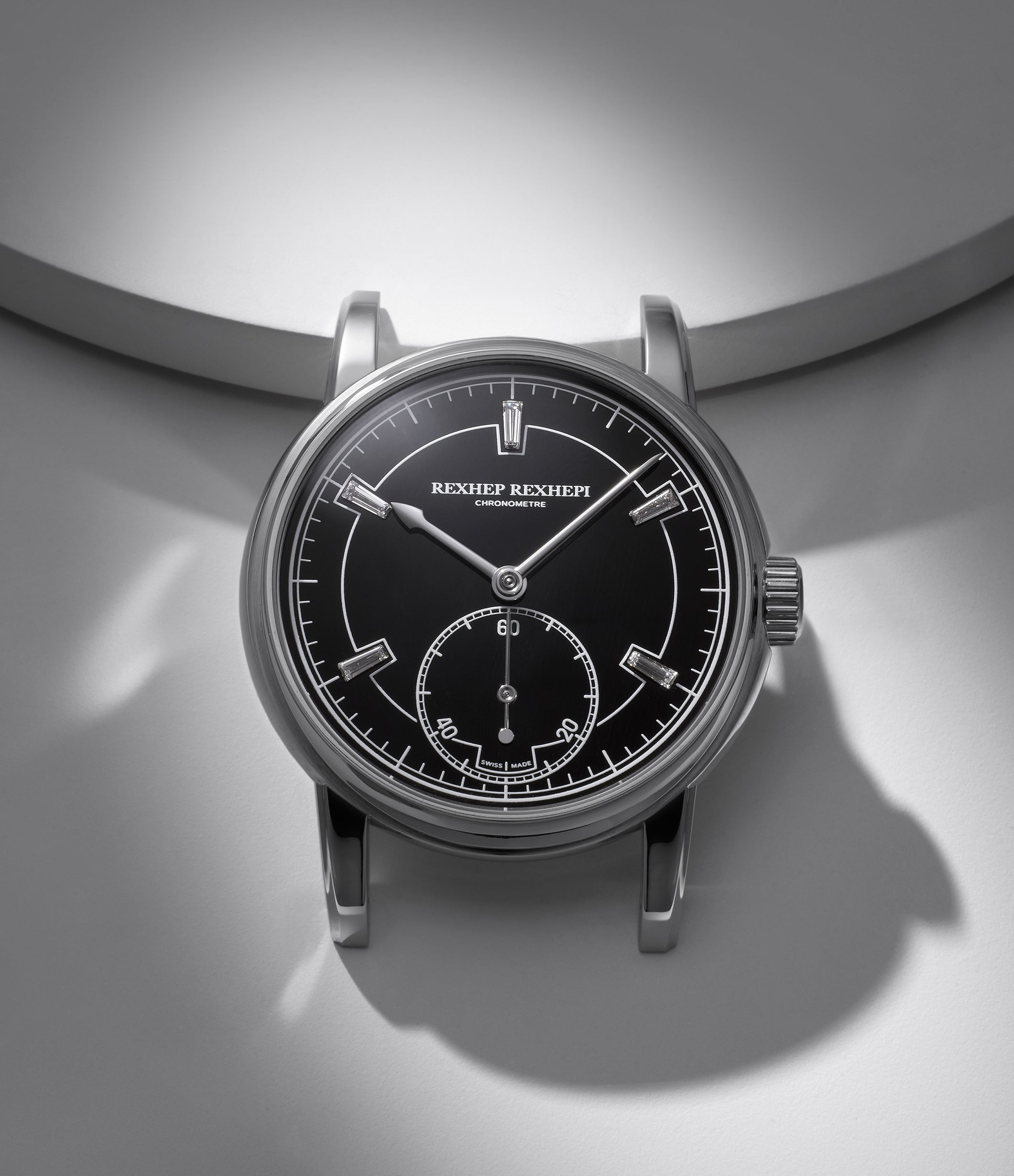

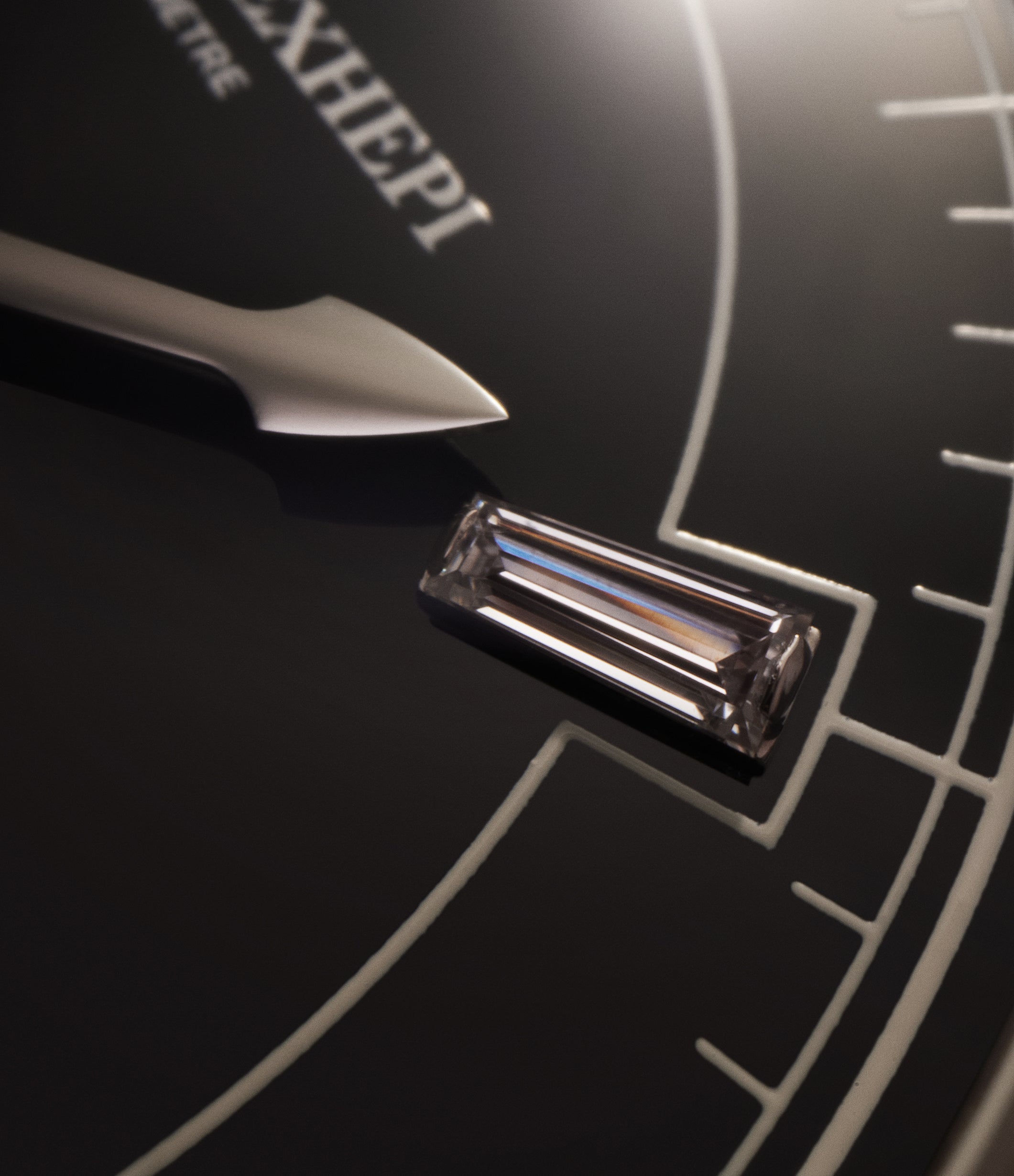

Chronomètre Antimagnétique
Even as AKRIVIA focused on adding capacity to produce the watches already on the catalogue, Rexhepi was already working on the next iteration of the well-received Chronomètre aesthetic. However, if the significant differences between the first and second examples or the watchmaker’s temperament were any indicator, a subsequent issue of the line would perhaps be more of a revolution than evolution.
While the Chronomètre Antimagnétique, first revealed as a unique example for Only Watch 2023 (the auction was deferred for a year), according to Rexhepi it is the first of a new series. In that it is much like the Chronomètre Contemporain II, which too was introduced first on the occasion of Only Watch 2021. It is for this reason, and the fact that it is an entirely new calibre and case that we will be seeing more of, that we have decide to discuss the Chronomètre Antimagnétique alongside other serially produced references.


Year: 2023
Case Dimensions: 38mm x 9.7mm
Calibre: RRCA
Power Reserve: 72 Hours
Complication: Zero-second reset
Case: Stainless-steel
Dial: Black grand feu enamel with gilt ‘poudre’ enamel printing
Calibre finishing: German silver with Côtes de Genève, anglage, polibercé polishing, black polishing and perlage
The case
While retaining the time-only classical mid-century aesthetic of the Chronomètre Contemporain pieces, the Chronomètre Antimagnétique was much more purpose- oriented. The “purpose” of course was anti-magnetism, which the scientific advances of the 1940s and 1950s called for. However, on a spectrum of Patek Philippe reference 3417 Amagnetic to the Rolex Milgauss, the Chronomètre Antimagnétique represents a middle ground, incorporating the characters of both but offering a fresh perspective.
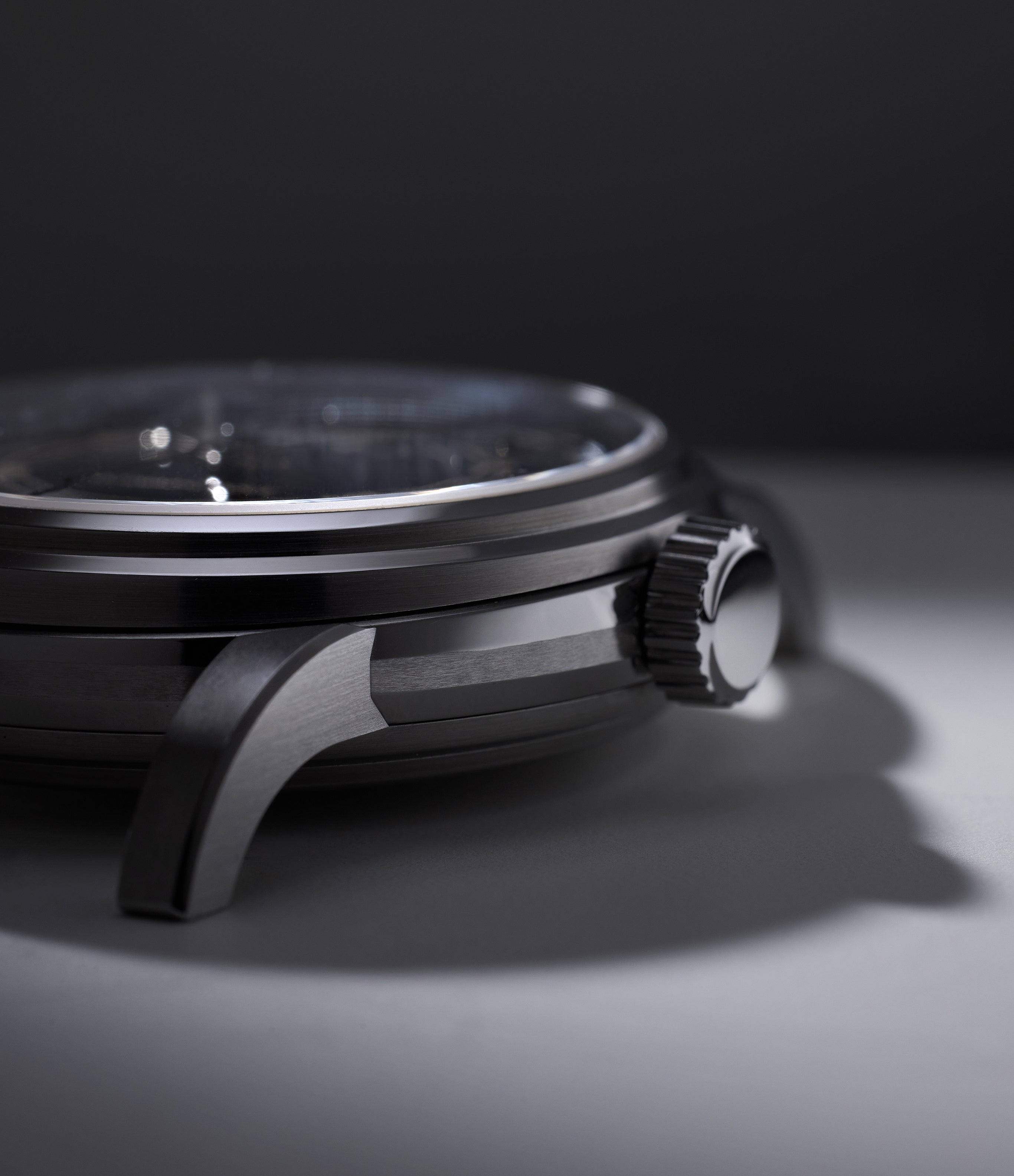

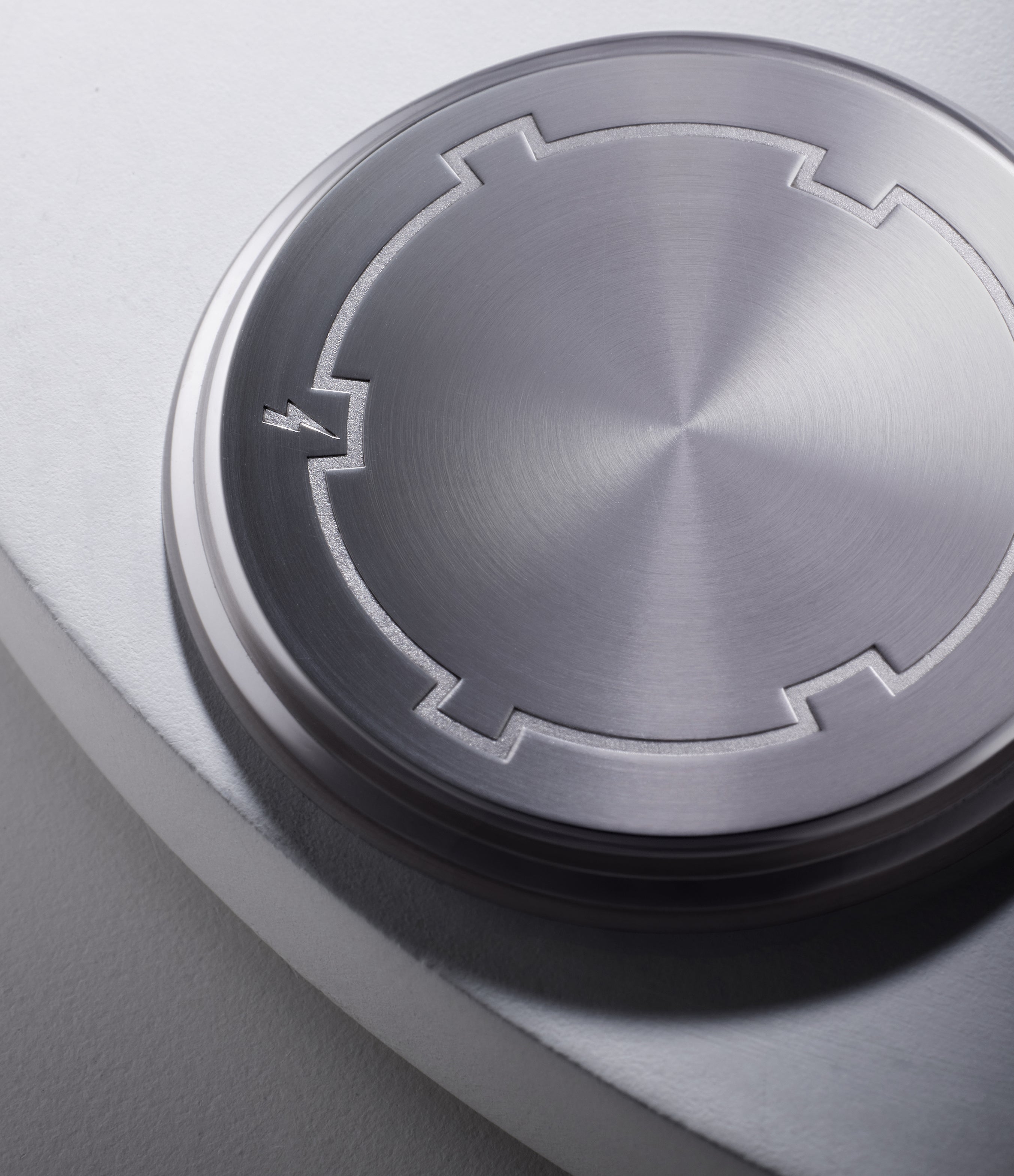

The Chronomètre Antimagnétique case, fabricated by Hagmann. It has a double-stepped appearance, both on the dial and movement sides. The ‘second step’ retains the familiar ovoid AKRIVIA bezel detail. However, its form in the Chronomètre Antimagnétique is much less pronounced.
The removable caseback features a lightning detail serving as a visual indicator for the bayonet lock.
Most crucial to the antimagnetic set-up is the new case, designed in conjunction with Hagmann. It featured an alloy of stainless steel, a metal Hagmann had very little experience working with over his long career. The case has a double stepped appearance, both on the dial and movement sides, minimising its profile even further than the 9.7mm case height indicates. The “second step” retains the familiar ovoid AKRIVIA bezel detail. However, its form in the Chronomètre Antimagnétique is much less pronounced. The steps, with their alternative polished surface and satinated profiles, are visually rich. The large, knurled crown is well-suited to the functional aesthetic. While the caseback is of the display variety, the watch comes with a removable closed caseback that meets the case in a bayonet lock. A lightning motif on the removable caseback, at 12 o’clock when the case is secured, serves as visual feedback for this action. More crucially, on the inside is a soft iron ring that, together with the dial plate and the closed double caseback, approximates a Faraday cage, easily magnetising and in doing that, protecting the movement within.
The calibre
Entirely new, and perhaps the biggest departure from the watches immediately preceding it, was the calibre RRCA. While the visual symmetry of the past remained, the form of the bridges appeared complementary so that they could all ostensibly collapse into each other forming one large metal piece. There were key architectural differences too, owing in part to the central seconds time display and balance wheel’s return to the central position. While the functionality has been a mainstay of Rexhepi’s output since the AK-06, it is perhaps most suited to this watch’s scientific nature.


The Chronomètre Antimagnétique calibre was entirely redesigned. It will feature in the subsequent series production variant of the watch.


The golden wheels, with lavish inward angles finished to a mirror sheen by hand, are contrasted by the shade of the bridges crafted from a beryllium copper alloy (CuBe).
Centrally located, anchored by the polibercé-finished rounded bridge, was the seconds wheel and the now-familiar heart-shaped cam crucial to the zero-second reset function. This, together with the reset lever anchored by an independent bridge to its left and a tension spring, helped the second hand spring back to 12 o’clock when the crown was pulled out to set the time. The horizontal clutch, similar to one found in a chronograph, allows the balance wheel to continue its oscillation even while the seconds hand is being reset.
The domed cutout in the mainspring bridge perfectly accommodated the gold seconds wheel that was driven indirectly by a series of gold wheels that originate from the wheel to the right of the balance. This was a change from the AK-06 and the Chronomètre Contemporain watches that featured subsidiary seconds driven directly by a wheel at 6 o’clock, while the balance lay off-centre, to the right.
The finishing in our view justifies the design of the removable caseback. In addition to the symmetry, the layout put most components on display, with Rexhepi finishing them to hold up to scrutiny. The mirror finish of the rounded seconds wheel bridge was precise, as is the black-polished rounded centre of the balance bridge.
The Côtes de Genève, with the stripes lining up across bridges as if the treatment was applied to a large contiguous expanse of metal, is immensely satisfying. The anglage on the bridges was wonderfully wide, serving as a place for the watchmaker to showcase his skill with the craft. Even the jewels that don’t wear gold chatons were surrounded by beautiful mirror-polished countersinks, done by hand.
Vila says of the aesthetic, “The Chronomètre Antimagnetique is a world away from his past work. It is the summation of Rexhepi’s artistic composition and movement design because it’s perfectly symmetrical. You can find this with the placement of the jewels; you can see a triangular motif in the shape of the bridges. It’s like a classical design from the Renaissance – something from a manual such as The Story of Art.”
The dial
The sector-style dial was an evolution of those seen on the Chronomètre Contemporain. Created in a black shade from the grand feu enamel that Rexhepi favours, it is topped with a printed inner hour scale, represented by a half chapter of hours blocks. These are designed to evoke the opposing magnetic poles, furthering the scientific nature of the watch. Half of these markers protrude into the concentric rings of the chapter, while others point outwards – another reference to the dial layout of the Chronomètre Contemporain hours representing the even hours through alternating blocks. The outer, sector-style minutes scale also features the same motif. The gold enamel is painted on to the dial and then fired in an oven to achieve its lustre.


The stepped hands typical of scientific instruments.


The texture on the outer sector-style chapter, as well as the inner, is reminiscent of the graté subsidiary seconds register on the black dial Chronomètre Contemporain II. This visually separates the two chapters apart from the smooth finish of the rest of the dial.
The stainless-steel hands tempered to a bronze shade, have several noteworthy details. While the hour hand has the club-shaped end seen in the Chronomètre Contemporain, here it has a more scalloped form. Since the minutes and seconds hands hover further up on the dial, they feature stepped ends to bring them closer to the chapter they correspond to, thereby minimising the possibility of misreading the time owing to the distance them. Such an effort to minimise parallax error is yet another reference to the scientific nature Rexhepi was aiming for.
In context
While still a unique example, there is every reason to believe that the Chronomètre Antimagnétique will form a core part of the Rexhep Rexhepi offering in the near future. While certain aspects – such as the case form – were an evolution on the Chronomètre Contemporain, other aspects – namely the calibre and the overall design inspiration – set the watch apart from anything else Rexhepi had created before. However, this pivot to creating classically inspired, purpose-driven watches is wholly consistent with his education and his approach since 2019. Standing alongside the Chronomètre Contemporain, it may represent an opportunity for Rexhepi to flesh out his catalogue, which remains one of the watchmaker’s key goals.
LVRR-01
In October 2023, a much-rumoured development became official when news broke of AKRIVIA’s first collaborative project. The LVRR-01 Chronographe à Sonnerie, which had been a few years in the offing, was finally public knowledge. The watch would be made in collaboration with Louis Vuitton’s La Fabrique du Temps and produced in a small series, with proceeds from sales going toward funding the Louis Vuitton Watch Prize for Independent Creatives. The award came with a cash prize and La Fabrique du Temps would then incubate the winner. Raúl Pagès would go on to win the inaugural edition of the prize for his Régulateur a Détente RP1.
Annabelle Roques, chief operating officer of AKRIVIA, says of how the project came to be, “Jean [Arnault] came to the workshop almost two years ago. He explained to Rexhep his project, that he wanted his watchmaking prize. Today you have the F. P. Journe Young Talent Competition and not much else. So, it’s really to help the young watchmakers.”


Year: 2023
Case Dimensions: 39mm x 11.9mm
Calibre: LVRR-01
Power Reserve: 72 Hours
Complication: Chronograph chimes to indicate the passage of a minute
Dial: Smokey translucent sapphire front and grand feu enamel back
Calibre finishing: inverted calibre featuring Cötes de Genève, black polishing, perlage and anglage
Production numbers: 10 pieces and two prototypes
The collaboration
This coming together would follow a format well established in haute couture. “It would be like in fashion – you have a concourse collection, after which you can make your own collection based on it,” Roques says. “[Arnault] wants to do the same with watchmaking. He explained to Rexhep that he would like to collaborate, of course, and that he will not be the only one. Jean would work with other independents in subsequent editions of the prize.”
That Rexhepi was the first watchmaker the brand wanted to collaborate with is significant. However, Rexhepi wasn’t immediately convinced.
Roques says, “At the beginning, although he discussed it [with Arnault] and had a good feeling after the meeting, Rexhep wasn’t really sure. He has never done a collaboration before and it’s not how he operates. However, he saw that Jean had good knowledge and was passionate about his desire to make a positive impact. It was a good move for AKRIVIA and equally, it allowed Louis Vuitton a meaningful way into the independent space.”
“I wish I'd had this sort of structured mentorship and advice. It can be life-changing, and this is why I'm supporting it. I also feel it’s essential to do something for the industry.”
Rexhep Rexhepi
Business considerations aside, to Rexhepi this was an opportunity of the sort he never had when he was first starting out. He said, “I wish I’d had the chance to take part in a competition like this when I started. I wish I’d had this sort of structured mentorship and advice. It can be life-changing, and this is why I’m supporting it. I also feel it’s essential to do something for the industry. After all, it has given me a lot, so I thought it important to pay it tribute in the form of nurturing the next generation.”
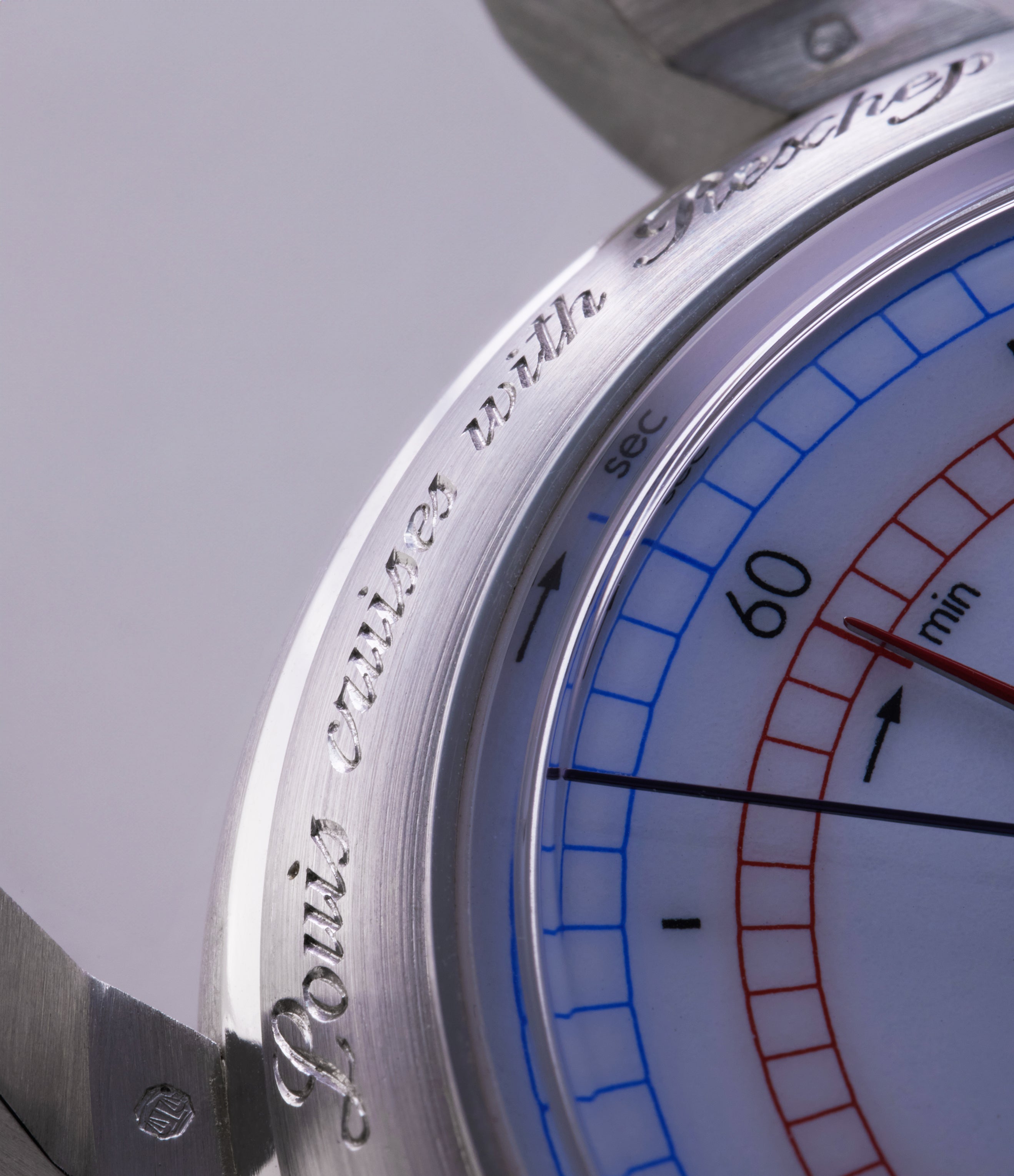

A chiming chronograph
Once Rexhepi was comfortable with the idea, he says it took him almost no time to settle upon the idea of a monopusher chronograph as the basis for the new watch. Since this was the first time Rexhepi would be working with Michel Navas and Enrico Barbasini, founders of La Fabrique du Temps, since their time together at BNB Concepts, the complication seemed a fitting nod to the past. It referenced Rexhepi’s original watch, the Tourbillon Chronograph Monopoussoir AK-01, which was also based on a BNB Concepts ébauche.
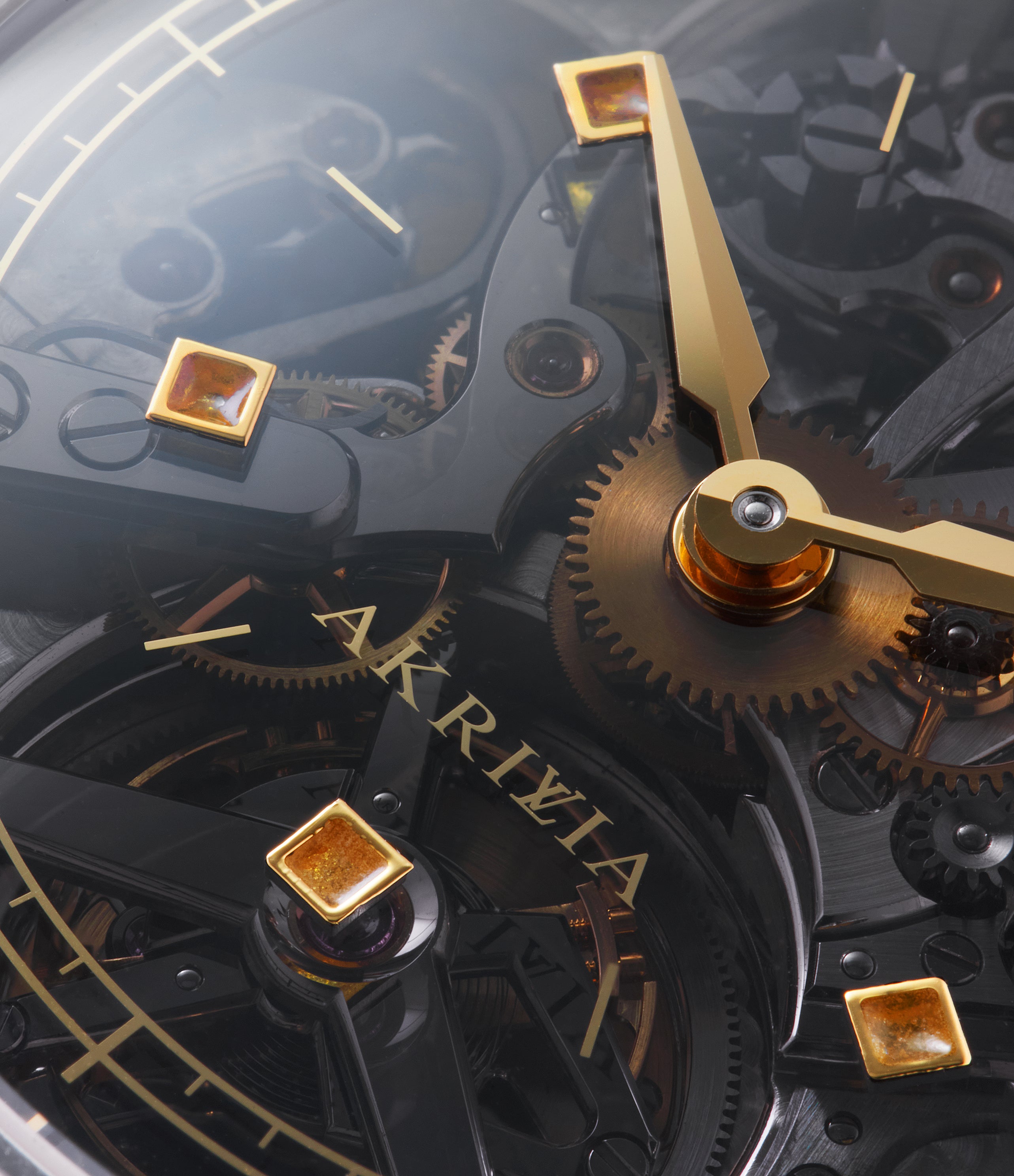

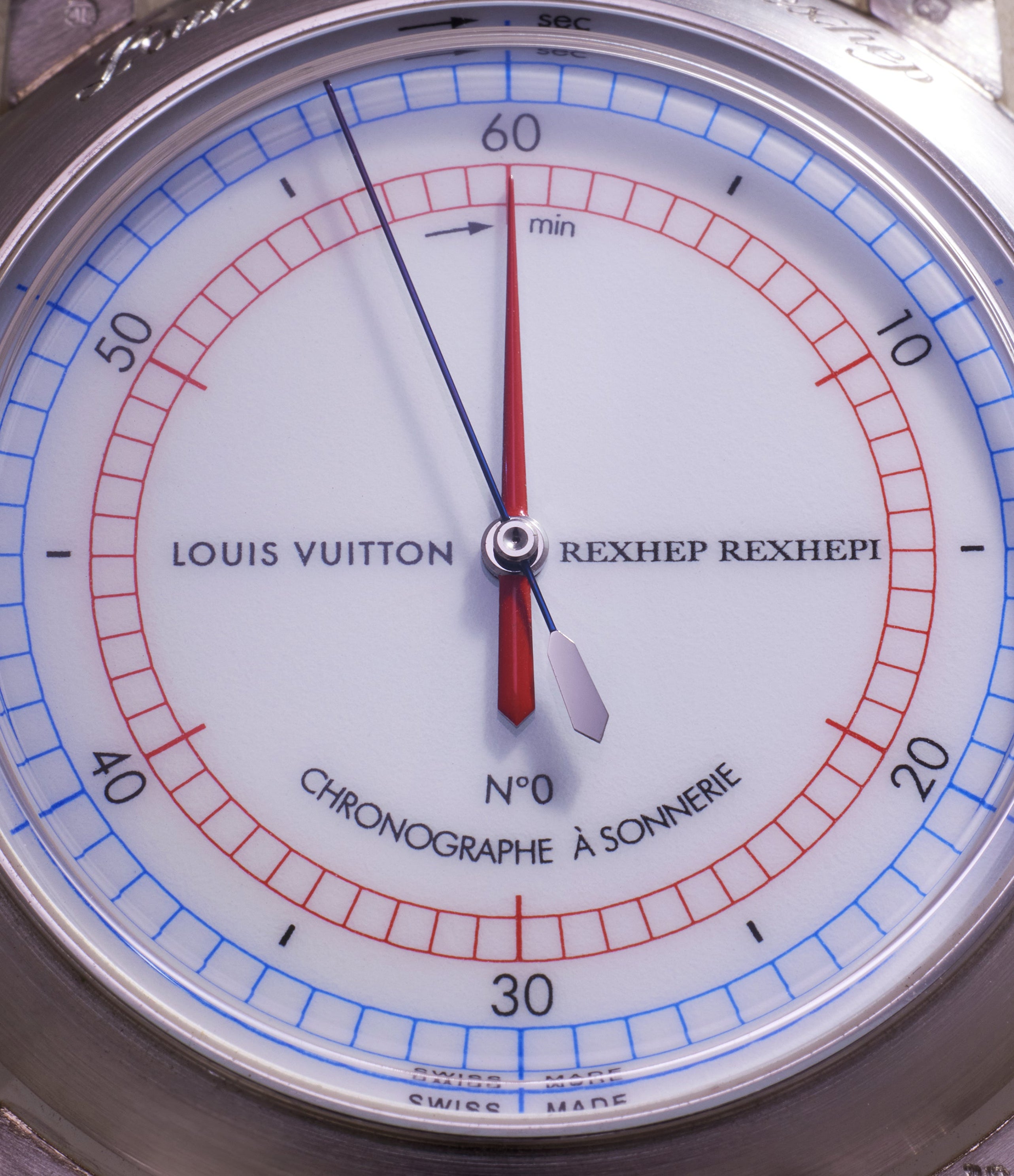

Overall, the dial is closely aligned to Rexhepi’s more recent aesthetic, while the smoked sapphire detail harks back to earlier AKRIVIA watches. The chronograph dial on the caseback is crafted from enamel.
However, Rexhepi’s desire to use this as a vehicle to further his evolution meant that it was never going to be just a chronograph. Roques says, “It started step by step… When Rexhep really digs into an idea, he keeps adding complications and ideas, one after another.”
Like the Tourbillon Chronograph Monopoussoir AK-01, the movement in this piece is inverted, showing off its mechanical complexity on the dial side. However, while in the AK-01 the calibre was only partially visible, in the Chronographe à Sonnerie this was improved upon with the inclusion of a translucent, smoked grey sapphire disc.
The calibre was an entirely novel horizontal wheel chronograph. The functioning of the chronograph was linked to a sonnerie complication, with a chime marking every elapsed minute when the chronograph was running. The heart of the calibre was a five-minute tourbillon, reminiscent of the slow-turning varieties found in pocket watches of old. It featured a new cage composed of 55 of the 391 components that made up the rest of the calibre.
The twin barrels ensured there was enough power not just for 72 hours of autonomy, but for the functioning of the chronograph without hampering balance amplitude. While the larger barrel powered timekeeping functionality and the chronograph, the other, smaller one – through a dedicated gear train – managed the chiming complication. This second gear train was governed by its own escapement, locking and unlocking once a minute, functioning in effect like a constant force device. Such a separation was crucial to preserving chronometry while incorporating the two complications.
The sonnerie was the result of a specially designed, monobloc hammer striking against a gong. This arrangement was visible to the right of the tourbillon, with the gong running the perimeter of the calibre. Both hammer and gong were crafted from stainless steel and were designed and fabricated in-house by AKRIVIA. A chiming chronograph represented a first in mechanical watchmaking, and one that satisfied Rexhepi’s desire for novelty and pursuit of meaningful horological innovation.
While the sapphire dial did colour the view of the movement, closer inspection revealed the fine finishing on components, such as the black polishing on the tourbillon bridge as well as on the column wheel, reset hammer, horizontal clutch, and the hammer for the sonnerie function. Flowing between these was a baseplate adorned with perlage. While the movement was occupied by the chronograph dial, the three-quarter-style bridge that lay underneath was decorated with Côtes de Genève and engravings detailing the Rexhep Rexhepi and Louis
Vuitton brand marks. Unfortunately, viewing it is a pleasure reserved only for the watchmakers who service the movement in the decades ahead.
Roques says that while some of the parts of the calibre – such as the axis, pinions, and some wheels – were fabricated in-house, for others the atelier relied on its regular roster of suppliers. Increasingly even parts produced by computer numerical control (CNC) are being made in-house, thanks to an investment in such machinery. She adds, “For instance, it was the first time we made our own monobloc gongs, which will also be utilised in the redesigned AK-03 calibre.” Other accessories, such as the tan leather strap and travel case-style watchbox, were the purview of Louis Vuitton, as is to be expected.
Says Rexhepi of the project’s short timeline, “We did it in a very short space of time and the development phase was hectic – I can’t make a movement, hands, designs and case in that amount of time. As a result, the watch was announced when it wasn’t completely finished. However, we have continued to work on it and the final piece is something I am proud of.”
The dial
The sapphire on the dial side married several AKRIVIA cues with Louis Vuitton ones. The railroad-style minutes track, with its alternating inward and outward pointing hour markers, was classic of Rexhepi’s style and printed in 3N gold. In fact, all dial printing, including the amalgam of the AKRIVIA and LV logos, were achieved in this fashion. It is worth noting that this marks the first instance of Louis Vuitton modifying its logo in such a fashion. Also crafted from gold were the applied hour-marker cubes filled with a honey-coloured plique-à-jour fired enamel – a reference to the Louis Vuitton Tambour Spin Time Air Quantum.
The lancet-style hour and minute hands completed a dial that the watchmaker did well to keep minimal and balanced, to compensate for the complexity peeking from underneath the sapphire. The only source of imbalance perhaps were the three visible gold screws that attached the dial to the calibre. Roques confirmed that this too will be remedied in production variants.
The chronograph dial on the movement side was more traditional Rexhep Rexhepi. It was white grand feu enamel on top of a palladium-gold base and featured a printed blue outer track for seconds and a red inner one that registered up to 60 minutes. The two hands corresponding to the scales wore matching shades. They were distinct also due to their visual footprint. In between was a chapter of Arabic minutes at 10-minute intervals.
The case
According to the AKRIVA team, the only constraint Louis Vuitton put on the project was that the calibre had to be housed in the barrel-like case form typical of the brand’s Tambour watches. Staying within those bounds, Hagmann created an original case that incorporated several AKRIVIA elements.
The three-part platinum case was marked by its raised bezel that did without the signature ovoid detail. The brushed profile of the case, punctuated with polished aspects, was nicely detailed and finished. The heptagon-shaped crown and monopusher, at 3 and 1 o’clock positions, referenced Louis Vuitton’s design vernacular. Turning over the case revealed the chronograph face, with the monopusher now at 10 o’clock, much like in a stopwatch.


Seeing it from this perspective helps one appreciate the sharp angle of the downturned lugs. Mounted on the midcase by rivets that were then soldered on, they are long and narrow. As with the Chronomètre Contemporain, their length was such that the caseback hovered when the watch was set down on a flat surface. According to Roques, production models of the Chronographe à Sonnerie will feature shorter lugs than those on the prototypes.


In context
It is perhaps fitting that in this collaboration, the nature of the partnership is just as important as the watch that it yielded. It marked the first time AKRIVIA partnered with a brand. Equally Louis Vuitton hadn’t collaborated with a watchmaking brand before either. As part of the large luxury marque’s concerted push into the small space that is independent watchmaking, it represented a number of strategic wins. AKRIVIA was able to reach a far greater audience while tying up with what is arguably one of the most feted young watchmakers helped Louis Vuitton establish itself as a considerable force in the scope of independents. It had the added benefit of establishing a programme that will help Louis Vuitton guide future generations of makers.
Rexhepi went to lengths to ensure that, even within the parameters of the Louis Vuitton case, the watch was as recognisably his as possible. While he has maintained that partnerships are perhaps not suited to his watchmaking philosophy, this will remain a milestone release for AKRIVIA because, like the Chronomètre Antimagnétique, the LVRR-01 is also the first glimpse of the next phase of AKRIVIA and Rexhep Rexhepi's story. If the LVRR-01 is any indication of that, the watchmaker may be embarking on another era marked by complicated pieces.
Parting thoughts
The year 2023 was a busy one for Rexhepi, both in terms of output and the growth of his atelier. It was evidence that the restlessness that marked the watchmaker’s early years was still driving him. At the same time, his growing atelier has meant that, perhaps for the first time, he has had the opportunity to remove himself from day-to-day operations enough to gain perspective to assess the state of his operation. This has spurred on a desire to streamline. Rexhepi says, “I think in the future almost all watches will be produced under the Rexhep Rexhepi brand. The house will still be AKRIVIA – this is my company. However, we will not make any more watches under the AKRIVIA name. It is a bit sad, but this is the way.”
For enthusiasts, this will mean a transition to new shapes that bridge the gap between AKRIVIA’s avant-garde forms and the more classically inspired world of Rexhep Rexhepi watches. However, within that, it is reasonable to expect more scientific and sports-oriented complications and designs. This is evidenced by the watches Rexhepi released in 2023 and the expected reworking of past references, namely the AK-03.
Together with the Chronomètre Contemporain II, Chronomètre Antimagnétique and the LVRR-01, Rexhepi has what appears to be the pillars that could support a wider collection. The operation, to which Rexhepi has been steadily adding capacity, is also coming together to this end – a blending of the old and new. Rexhepi says, “For me it was a dream – Hagmann is a legend. Since 17 I had been dreaming that one day I would have a case made by him. It happened, even if it was 15 years later. I was happy finally to have him in my workshop and to learn with him. How many people can say that their dream came true like that?”
Hagmann’s experience was balanced by an otherwise young team of professionals, a practical consideration on Rexhepi’s part. Hagmann passed away in early 2025 but by then the master had already had a few years to transmit his knowledge to the next generation of artisans at the atelier.
Consequently, the team is poised for the next chapter of the AKRIVIA story. Production will remain small by design. Roques says, “Maybe one day we will produce 100 pieces a year, but we need to keep the quality and the craftsmanship. With the way we work currently, we’re not able to, and we don’t desire it either. If we were looking to increase production, we wouldn’t have set up the workshop the way we have.”
Rather than the numerical output, innovation will be the measure of success. Roques says, “I think Rexhep’s goal is to be in watchmaking history for the work he does, the knowledge he has and how he can transmit it, so his mind is occupied between this, developing a new calibre and inventing something new. He always wants to evolve as he really hates redoing something that he already did.”
However, to view Rexhepi’s impact merely in terms of the watches he has made does a disservice to the wider influence he has had on watchmaking. He represents a different kind of watchmaker especially when viewed in the Swiss context. Not only is he young and charismatic, but his path to success is an unusual and inspiring one.
Whether it is Rexhepi’s impact on the newest wave of young makers and contemporaries, or the promise he has shown throughout his career, it is easy to be excited about the direction he decides to next take. Whichever palette and style he decides to employ, it is fair to expect it to be a thoughtful and considered one.
Our thanks to the following experts and collectors who have shared their time, expertise, and watches with us. This list includes Jean-Marc Figols, Philippe Dufour, Laurent Ferrier, Kari Voutilainen, Jean-Claude Biver, William Massena, Gaël Petermann, Wes Lang, Todd Levin, Firmin Li, André Gigon, Peter Wais, Theodore Diehl, Theo Danjuma, Mike Bindra and Jean-Pierre Hagmann. We would like to thank all of them for their input.
We are especially grateful to Rexhep Rexhepi, Annabelle Roques and the team at AKRIVIA for opening up the workshop and themselves to us and walking us through this remarkable journey they are currently on.




























































































